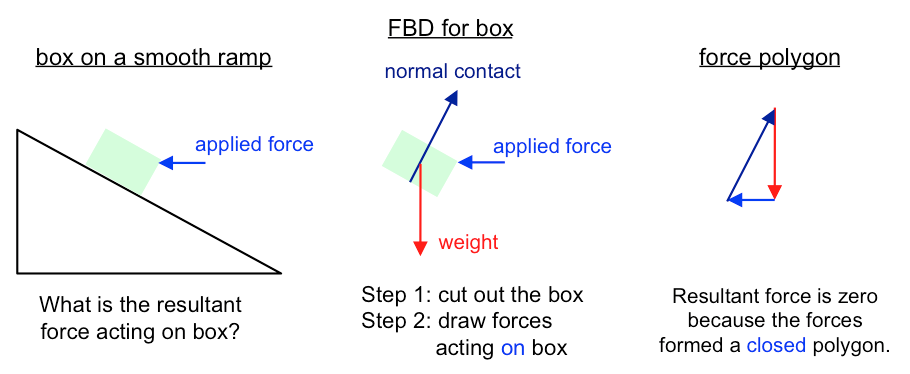A Free Body Diagram (FBD) also known as Labeled Force Diagram is an extremely handy tool. Although FBD is not specifically mentioned in the JC Physics syllabus (e.g. codes 9646, 9702), all Physics students should have been taught this tool or seen it in action.
In solving Newtonian Mechanics problems, FBD is often the first tool that we pick up from the Physics Toolbox. If you could draw a correct FBD, half the battle is won. An incorrectly drawn FBD, however, would get you into a bigger mess and make the problem on hand seems more difficult.
So, what’s a FDB? It is a diagram showing all forces acting on an object. The operative word is on, not by the object. Two common mistakes in a FDB:
(1) draw the forces acting by the object
(2) draw the resultant force
Drawing a FDB is simple and involves two steps. Step 1, cut out the object from system that it is part of. Step 2, identify and draw all the forces acting on the object. There are basically 3 categories of forces acting on the object:
(1) object’s weight (this is the force acting on object by Earth)
(2) contact forces (when the object is in physical contact with other objects/surfaces)
(3) applied forces (external forces acting on object)
Here’s a simple illustration. Consider a system that consists of a box sitting on a ramp, draw a FDB for the box. Refer to Fig 1.

The FDB is an excellent tool to show all forces acting on an object. Could we use a FDB to determine the direction of motion as well?

Let’s examine this issue with another simple illustration. Consider a ball in mid-air and that air resistance is negligible. The ball’s FDB is shown in Fig 2.
What is the direction of ball traveling?
Many students would reply “Downwards, lah. Isn’t it obvious?”.
Do not be fooled by the red arrow pointing downwards. Even if the ball is travelling vertically upwards or travelling in a projectile motion, the FBD of the ball is still Fig 2.
Never count on a FBD to tell us the direction of motion!
Now, who says Physics is boring? 😉
